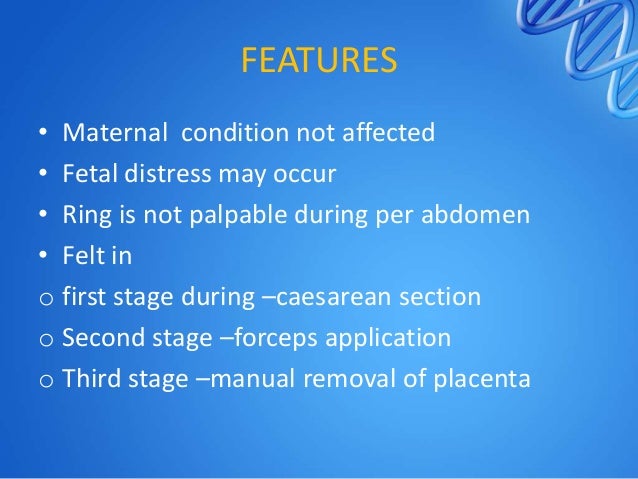Cervical Dystocia Pdf


Cervical Dystocia* * Read by invitation at a meeting of the Richmond Academy of Medicine, Richmond, Virginia, November 12, 1940. A Study of Eighty-Six Cases Nelson B. DYSTOCIA This document has. Is diagnosed in the presence of painful regular contractions plus cervical effacement with at least three ems dilation.“’. Cervical dilation and station across time.7,8. Dystocia disproportion caused by suspected macroso-mia or a contracted pelvis; and (4) if there are.
Nilsson, Prediction of time to delivery from start of contractions in induced labor: A life table analysis approach, International Journal of Gynecology & Obstetrics, 1984, 22, 3, 225 • 2 P. Percheson, John J. Carroll, Hydergine therapy of uterine inertia, Canadian Anaesthetists’ Society Journal, 1954, 1, 2, 87 • 3 R. Law, PROLONGED LABOUR IN MULTIPARAE, BJOG: An International Journal of Obstetrics and Gynaecology, 1954, 61, 3, 331 • 4 H. Johnson, CONTINUOUS CAUDAL ANAESTHESIA IN THE MANAGEMENT OF CERVICAL DYSTOCIA*, BJOG: An International Journal of Obstetrics and Gynaecology, 1952, 59, 3, 372 • 5 J. Chalmers, RETRO-PUBIC SUSPENSION OF THE URETHRA AND BLADDER NECK IN THE TREATMENT OF FEMALE STRESS INCONTINENCE, BJOG: An International Journal of Obstetrics and Gynaecology, 1952, 59, 1, 77 • 6 P. Hughesdon, THE FIBROMUSCULAR STRUCTURE OF THE CERVIX.
And its Changes during Pregnancy and Labour, BJOG: An International Journal of Obstetrics and Gynaecology, 1952, 59, 6, 763 • 7 Robert C. Gill, James M. Farrar, EXPERIENCES WITH DI-HYDRO-ERGOTAMINE IN THE TREATMENT OF PRIMARY UTERINE INERTIA, BJOG: An International Journal of Obstetrics and Gynaecology, 1951, 58, 1, 79.
Aetiology These may be remembered as 'The Powers' (uterus), 'The Passenger' (fetus) and 'The Parts' (pelvis). • Uterine factors: good contractions start at the fundus and move down towards the pelvis. 3d Custom Girl Mods Clothing S on this page. If uterine activity is unco-ordinated or contractions short or infrequent then labour will be difficult and prolonged. Primigravid mothers may be more at risk of dystocia as they have a degree of uterine unco-ordination which is why their labours tend to be longer. Oxytocin can enhance and co-ordinate uterine contractions.
• Fetal factors: position or lie (eg, transverse or breech), macrosomia (birth weight ≥ 4.5 kg), shoulder dystocia (this results from a combination of fetal factors and pelvic passage factors). • Pelvic passage factors: a pelvis with a round brim is very favourable in labour; however, some women have a long and oval brim. A small pelvic brim should be suspected if, in a primigravida, the fetal head has not engaged into the pelvis by 37 weeks of gestation. Corel Draw Patterns. Other factors that can lead to cephalopelvic disproportion are scoliosis, kyphosis and rickets.
Shoulder dystocia in part results from a small or abnormal pelvic inlet. Types of dystocia Cervical dystocia In cervical dystocia, the cervix fails to dilate during labour. Failure of cervical dilatation can be due to previous cone biopsy or cauterisation for cervical dysplasia.
Other reasons for failure to dilate include trauma. Sometimes, if there are unco-ordinated uterine contractions then the failure of cervical dilation may be secondary to this and this should respond to oxytocin. If dystocia continues despite this then the infant will need to be delivered by caesarean section. See separate article. Shoulder dystocia During the peripartum period the infant's head usually lies to the left and then rotates to the occipito-anterior position, and the head is delivered first. Following this, the shoulders lie in the anteroposterior position and then pass the pelvic brim. However, if the shoulders become stuck at this position, the infant can inhale, as the mouth and nose are out of the vagina; however, the chest cannot expand as it is stuck in the pelvic brim.